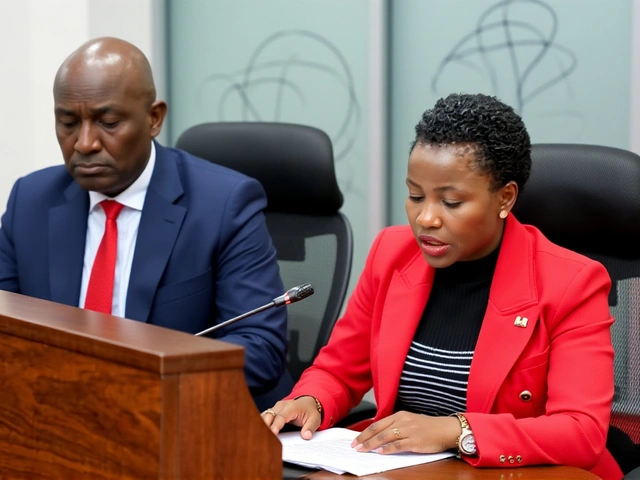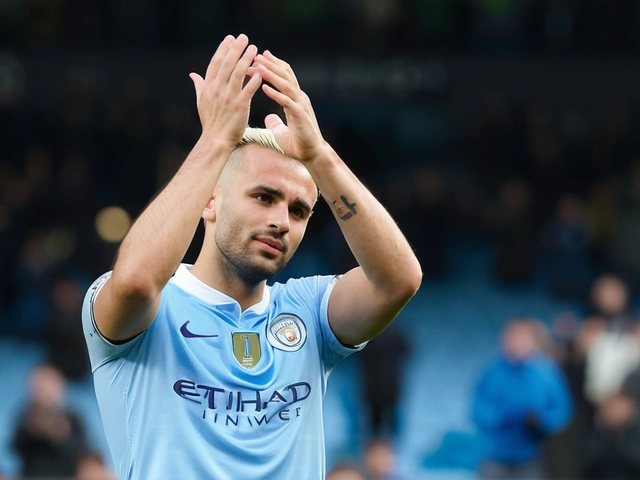Raila Odinga’s Strategic Shift: A Political Recalibration Within ODM
In a seismic shift within the Orange Democratic Movement (ODM), its leader Raila Odinga is reportedly planning to refresh the party's leadership by replacing long-time allies, Mombasa Governor Hassan Joho and Kakamega Governor Wycliffe Oparanya, with new, dynamic faces. This strategic move is seen as a bid to revitalize the party and bolster its chances in future electoral contests. The ODM, a major political player in Kenya, has been keen to renovate its image and leadership structure to resonate more with younger voters and address internal party criticisms.
The Need for Change
The decision to replace Joho and Oparanya comes amid growing internal party opposition and criticism regarding their governance styles. Both Joho and Oparanya have been instrumental in ODM's political fabric, but their long tenure and the party's desire for rejuvenation appear to have set the stage for this transition. The move is part of a broader strategy by Odinga to inject fresh perspectives and energy into the party, making it more competitive and appealing in the ever-evolving political landscape of Kenya.
Raila's Plan: Identifying and Grooming New Leaders
One of the pivotal elements of this strategy involves identifying and grooming new leaders who can take over key positions within the party. Raila’s vision includes bringing in individuals who not only resonate with the younger demographic but also have the capability to steer the party towards new heights. This approach is expected to bring a breath of fresh air into ODM’s ranks, making the party more dynamic and adaptable to the current political environment.
Reactions from Within the Party
The news of this impending leadership change has generated a mixture of reactions within ODM. Some members see this as a necessary and timely evolution, applauding Raila's foresight in recognizing the need for new blood. Others, however, are wary of the potential disruptions such a shift might bring given the established roles of Joho and Oparanya within the party’s structure. This dual sentiment underscores the delicate balance Raila must maintain in executing this transition without fragmenting the party.
Political Calculations: Broadening Appeal to Younger Voters
Raila Odinga’s plan isn’t just about replacing two key figures; it’s about a comprehensive strategy to broaden ODM’s appeal, particularly among the younger voters who represent a significant portion of the electorate. Younger voters often feel disillusioned with established political figures and are more inclined towards leaders who they believe can bring about tangible change. By positioning new and potentially more relatable leaders, ODM aims to bridge this gap and build a more inclusive and forward-thinking party.
The Role of Governance Styles in Shaping Opinion
The governance styles of Joho and Oparanya have been points of contention not only within ODM but also among the public. Critics have highlighted issues ranging from administrative inefficiencies to allegations of maladministration, which have, in part, spurred the call for their replacement. By addressing these governance concerns through new leadership, Raila hopes to restore confidence and build a stronger, more united front as the party gears up for the future.
The Broader Political Landscape
This strategic shift within ODM also reflects the broader context of Kenyan politics, where evolving voter expectations and the quest for effective governance are reshaping party dynamics. Political parties are increasingly finding it necessary to adapt and evolve their strategies to remain relevant. Raila’s proactive approach is indicative of a recognition that political longevity requires continuous renewal and responsiveness to the electorate’s needs.
What Lies Ahead for Joho and Oparanya?
As Joho and Oparanya potentially step down from their prominent roles within ODM, questions arise about their future political trajectories. Both have been substantial figures in Kenyan politics, and their next moves will be closely watched. It remains to be seen whether they will take on new roles within or outside the party, or perhaps pivot towards different public service arenas. Their experience and influence will undoubtedly continue to play a role in the country’s political landscape.
Conclusion: A New Chapter for ODM
Raila Odinga’s decision to inject fresh blood into ODM’s leadership heralds a new chapter for the party. It’s a bold move aimed at reinvigorating the party, addressing internal criticisms, and appealing to a broader voter base, particularly the youth. As Kenya navigates its dynamic political terrain, the coming months will reveal how effective this strategic shift will be in shaping ODM’s future and its role in the national political arena.







Comments
Tulika Singh
Change isn't betrayal. It's evolution.
Every movement needs new hands to carry the torch.
Brajesh Yadav
OMG this is DRAMA 😱🔥
First Joho gets sidelined, then Oparanya gets ghosted...
Who’s next? 😭
Raila’s playing 4D chess and we’re just pawns 🤡👑
Someone call Netflix-this is a season finale!
Govind Gupta
There’s something quietly beautiful about letting go of power gracefully.
It’s not weakness-it’s wisdom wrapped in silence.
Some leaders build legacies by holding on.
Others, like Raila, build them by stepping aside to make space.
It’s not about replacing faces.
It’s about making room for futures that haven’t been named yet.
And honestly?
That’s the kind of leadership that outlives elections.
tushar singh
This is actually kind of inspiring.
Change doesn’t have to be scary.
It can be smart.
And if it helps bring in younger voices?
Sign me up.
Let’s grow, not just hold on.
Robert Shealtiel
They’re replacing them because they know the youth won’t vote for the same faces
But no one talks about who’s really pulling the strings behind the curtain
And if you think this is about renewal
You’re not looking deep enough
Marrissa Davis
Yessss this is what we need!!
Old guard? Time to pass the mic.
Young people aren’t dumb-they see the same faces for 20 years and they’re like ‘nah’.
Let’s get fresh energy, real talk, and less politics-as-a-family-business 🙌
Sean Brison
Honestly? This is textbook political hygiene.
Every party gets stale. Every leader gets comfortable.
Raila’s doing what every successful org does-refreshing the pipeline.
It’s not personal. It’s strategic.
And if you’re mad about it?
You’re probably the one who’s been sitting in the same chair for too long.
Norm Rockwell
This isn’t a leadership change
This is a cover-up
They’re replacing Joho and Oparanya because they found the emails
The ones about the offshore accounts
The ones about the land grabs
The ones about the 2017 vote manipulation
They’re not being ‘replaced’
They’re being quietly erased
And the new faces?
They’re already signed to the same deal
Same players
Same game
Just different names on the door
Lawrence Abiamuwe
This is a commendable move towards institutional renewal.
Leadership continuity must be balanced with generational transition.
Governors Joho and Oparanya have rendered invaluable service.
It is now prudent to elevate emerging talent with fresh vision and integrity.
ODM demonstrates maturity in this transition.
Dan Ripma
History does not remember the loyalists.
It remembers the architects.
And Raila? He’s not just reshuffling chairs.
He’s building a new temple.
And the old pillars?
They were never meant to hold up the roof forever.
They were meant to guide the foundation.
Now?
Let the new beams rise.
amrin shaikh
Please. Joho and Oparanya were mediocrities wrapped in titles.
They spent more time posing for selfies with chiefs than fixing roads.
And you call this ‘strategic’? No.
This is damage control.
ODM was sinking.
And now they’re throwing the anchors overboard.
But guess what?
The new people? They’re just as corrupt.
Just younger.
And better at Instagram.
jai utkarsh
You think this is about youth? Please. It’s about lineage. It’s about control. Raila has spent decades building a dynastic machine. Joho and Oparanya were useful idiots who didn’t question the script. Now? He’s replacing them with people who won’t just obey-they’ll worship. The ‘new faces’? They’re not leaders. They’re acolytes. The youth don’t want fresh faces. They want real accountability. And Raila? He knows that. Which is why he’s giving them curated puppets instead of power. This isn’t renewal. It’s refinement of the illusion.
Chandan Gond
This is how you lead with heart.
Not by clinging.
But by clearing the path.
Let the young ones rise.
Let them stumble.
Let them learn.
That’s how you build something that lasts.
Not by keeping the old throne warm.
But by handing them the keys.
And yes-it’s scary.
But bravery isn’t staying in charge.
It’s knowing when to step down so others can stand up.
Hailey Parker
Oh wow, so the ‘renewal’ is just replacing two guys who didn’t fix Mombasa’s potholes with two guys who’ll probably do the same thing but with better TikTok videos?
Y’all really think youth care about ‘fresh faces’ if the policies are the same?
It’s not about who’s in the suit.
It’s about who’s writing the script.
And unless Raila’s giving the pen to someone who actually wants to fix the system?
Then this is just a very expensive cosplay.
John Bartow
You know what’s interesting? This mirrors what happened in Ghana with Nkrumah’s successors. Or Senegal with Senghor stepping aside for Diouf. Or even Indonesia’s transition from Suharto to Habibie. Political renewal isn’t unique to Kenya. It’s a global pattern-when a movement outgrows its founders, it either fractures or evolves. Raila’s choosing evolution. The real question isn’t who’s leaving. It’s whether the new generation can translate idealism into infrastructure. Because youth don’t want symbolism. They want sewage systems. And libraries. And electricity that doesn’t vanish at 8 PM.
Mark L
this is so cool!!!
new blood!!!
young peeps!!!
hope they fix the roads lol
also can we get more memes about this? 😄
Orlaith Ryan
Finally! Time for new energy!